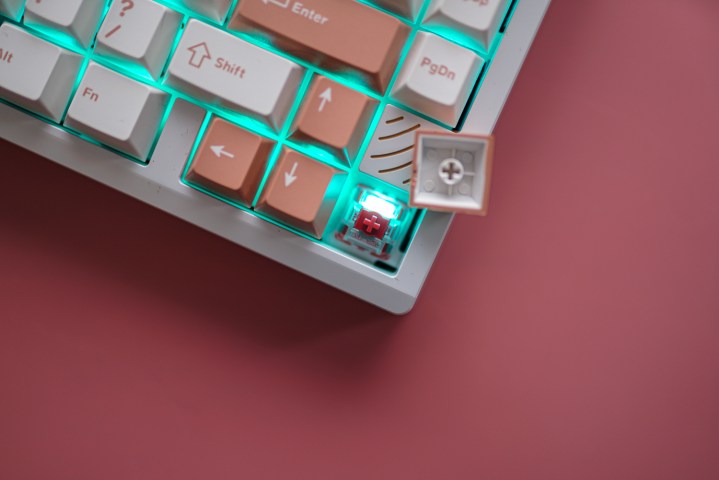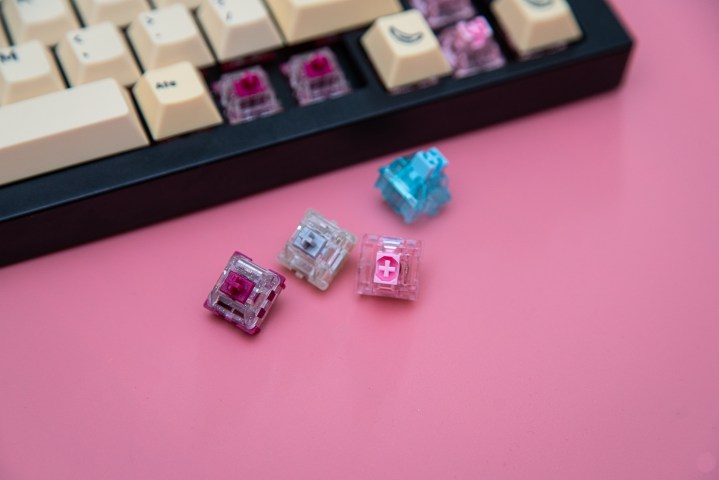I’m a certified mechanical keyboard nerd at this point, which shouldn’t come as a surprise considering most of the best gaming keyboards are mechanical options. Still, mechanical keyboards aren’t perfect. Because of their mechanical nature, there are multiple failure points on each switch, and over time, your keyboard will start to act up.
In most cases, you have to follow a troubleshooting path that requires a switch puller and a soldering iron as you slowly figure out why some keys work and others don’t. Thankfully, there’s an easier way, and it’s a free app that I discovered while trying to troubleshoot my own keyboard.
The diagnosis

The main problem I’m talking about with mechanical keyboards is something called “chatter.” There are a few different ways chatter can happen, but the result is that a key registers multiple inputs when you only press it a single time. The issue starts with just a double input — you type “e” and get “ee” instead. Over time, or in extreme circumstances, you could get half a dozen registered inputs for one keystroke. With minor chatter, you might only have one or two keys acting up. In more dire situations, such as the one I recently found myself in, it could be several keys acting up.
Although the word “chatter” implies that this issue solely comes down to multiple inputs from a single keystroke, that isn’t the case. The problem comes down to either an issue in the switch or on the PCB of the keyboard itself. That means chatter can show up as missed inputs, as well. That’s particularly true of modifier keys like Shift, where a mechanical failure can show up as the keyboard not registering an input at all while you hold down the key.
Chatter is usually a switch issue. If you’re using a new keyboard, or you’ve recently replaced the switches, you could have a faulty switch. It can also develop over time. Dust and debris can work its way into the switch, below the switch, and over the PCB. All of that could cause chatter. You can also damage the very sensitive pins on a switch during installation, which could cause chatter, as well. Making this situation even more complicated, you could experience software-induced chatter, too.

If you have a name-brand keyboard like the Asus ROG Azoth of Keychron Q1 HE, you don’t need to worry much about software issues. They can still show up, but they’re less likely. Lesser-known brands may not have fine-tuned firmware, though. The firmware could have an inaccurate bounce time — the time it takes for the key to return to its resting position — which could trigger chatter. Software issues are particularly difficult to nail down because they’re inconsistent and often affect several keys.
You can solve a minor case of chatter relatively easily — replace the switch, or clean it, and you should be fine. In more extreme circumstances, you’re signing up for hours of trial and error to figure out which switches are causing issues and trying to fix them individually. There’s an easier, and much faster, way.
The solution

There are a few software solutions to keyboard chatter available, but the one I settled on was KeyboardChatterBlocker, which is a free, open-source app that detects and blocks chatter on your keyboard. There are a few reasons I recommend it compared to similar tools. For starters, it allows you to set a threshold for individual keys. There’s a global threshold that will block duplicate keystrokes, but you can also set the tool to work on a per-key basis.
If you type quickly, those individual adjustments make a big difference. You can tune commonly pressed keys with a lower threshold to pick up on chatter rather than intentional keystrokes, while less trafficked keys can use a higher threshold. The default 100ms global threshold works well for most situations, but customizing even just a few keys can make a world of difference.
The big reason I like KeyboardChatterBlocker is the log, however. As you use the app, it will log every case where it blocks chatter. Over a few hours of using your PC, you’ll have a 1,000-foot view of which keys are acting up and how frequently they’re acting up. KeyboardChatterBlocker lets you sort the log by the percentage of chatter for each key so you can see the keys with the most issues up top.

This is important because a software solution to keyboard chatter is only temporary. As useful as KeyboardChatterBlocker and similar tools are, they aren’t perfect. They’ll miss some instances of chatter, or they’ll unintentionally block some keystrokes. That’s just the nature of the beast when using a software solution to a hardware problem. You can use software to solve the problem right away, but eventually, you’ll want to actually fix the keyboard.
In my case, KeyboardChatterBlocker helped a ton in the troubleshooting process. The log narrowed down the search for the keys that were causing the most trouble, and it allowed me to troubleshoot those keys individually rather than trying to clean and replace everything on the keyboard. It turned what could have taken me several hours into a process that took about 30 minutes. And before extra keys and tools to fix the existing switches showed up in the mail, KeyboardChatterBlocker made my keyboard usable.

If you don’t have issues, a tool like this can help expose them, too. Using a global threshold of around 100ms — that’s what works best for most people — the log can pick up if you have any chatter developing. It’s difficult to find chatter at first where an extra keystroke or two only shows up occasionally, especially when you’re in the heat of typing. Keeping the log active will show you if there are particular keys where chatter is showing up.
The goal isn’t to have KeyboardChatterBlocker running on your PC at all times. It’s a temporary fix and a useful troubleshooting tool, but you’ll eventually want to repair or replace your chattering keyboard. Even after fixing my issues with chatter, however, I still have KeyboardChatterBlocker installed. It’s a great tool to have after replacing switches or cleaning my keyboard, and it’s essential if you’re running into strange behavior with your keyboard.





